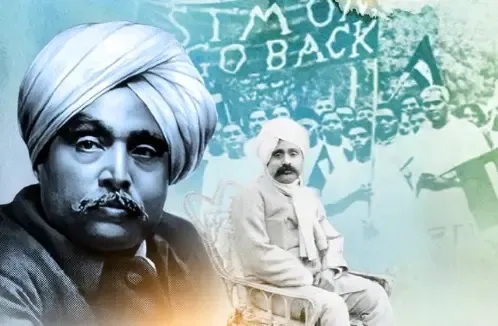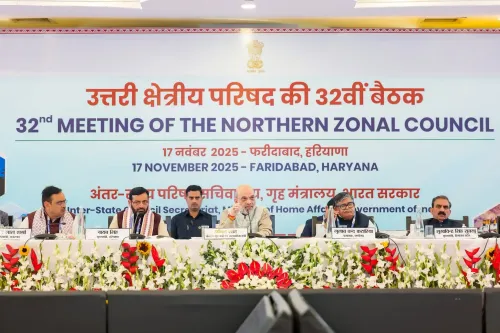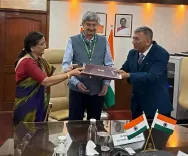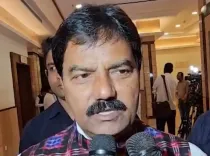Did Mallikarjun Kharge Pay Tribute to Lala Lajpat Rai on His Death Anniversary?

Synopsis
Key Takeaways
- Lala Lajpat Rai was a key figure in the Indian freedom struggle.
- He was instrumental in promoting social reforms and fighting against untouchability.
- Rai authored several influential works that challenged colonial narratives.
- His leadership during the Simon Commission protests highlighted the Indian demand for rights.
- Rai's legacy continues to inspire social justice movements in India.
New Delhi, Nov 17 (NationPress) The President of Congress, Mallikarjun Kharge, honored the memory of Lala Lajpat Rai, a prominent figure in India’s struggle for freedom, on his death anniversary. Known as Punjab Kesari, he was a key member of the legendary Lal-Bal-Pal trio.
In a heartfelt message shared on the social media platform X, Kharge stated, “Every blow that falls on my body will prove to be a new nail in the coffin of the British Empire ~ Lala Lajpat Rai. I pay my respects to this indomitable warrior of the national movement, 'Punjab Kesari', 'Sher-e-Punjab', Lala Lajpat Rai ji on this solemn day.”
Lala Lajpat Rai, a multifaceted personality—politician, social reformer, author, journalist, orator, and parliamentarian—was born on January 28, 1865, in Dhudike village, located in Punjab’s Ludhiana district. He received his foundational education from both his father, Radha Kishan, and his teachers, consistently achieving excellence in his studies and garnering numerous accolades.
In 1880, he enrolled in the Mission School in Ludhiana, where he excelled academically despite facing health challenges and adverse circumstances. His enthusiasm for reading, writing, and public speaking blossomed during these formative years and remained with him throughout his life. He exhibited remarkable leadership abilities from an early age.
In 1881, he joined Government College in Lahore and concurrently enrolled in Law College at the suggestion of his peers. After earning his license for Mukhtiarship, he began his legal career at the Revenue Court in Jagraon, Ludhiana district. By 1886, he had established a legal practice in Hissar, quickly gaining a reputation for his keen legal insight.
Rai became an active participant in the Arya Samaj movement in 1882, rising swiftly through its ranks. While in Rohtak, he served as Secretary of the local Arya Samaj and helped transform it into one of the movement’s most dynamic hubs.
A dedicated social worker and philanthropist, he made significant contributions during the famines of 1896, 1899–1900, and 1907–08, as well as in the wake of the catastrophic Kangra earthquake of 1905. He fervently advocated for the eradication of untouchability and later supported the Harijan Sewak Sangh, which was established under the guidance of Mahatma Gandhi.
As an accomplished writer, Lajpat Rai wielded a powerful pen. Between 1895 and 1900, he penned biographies of influential figures such as Mazzini, Garibaldi, Shivaji, and Swami Dayanand. He ardently countered the distortions regarding India presented in Katherine Mayo’s controversial book Mother India, responding with his own work, Unhappy India.
In 1928, the United Kingdom established the Simon Commission, led by Sir John Simon, to evaluate the political landscape in India. Rai, alongside Indian political entities, boycotted the Commission due to its lack of Indian representation. Upon the Commission's visit to India, Rai spearheaded a non-violent protest march, rallying under the slogan “Simon Go Back!”.
Rai continued to be a prolific writer, producing notable works such as The Story of My Deportation, Arya Samaj, Unhappy India, The United States of America: A Hindu’s Impression, and England’s Debt to India.
On October 30, 1928, as the Simon Commission arrived in Lahore, Lajpat Rai led a peaceful protest against it. Police Superintendent James A. Scott ordered the officers to baton-charge the demonstrators, resulting in Rai being severely injured. He never fully recuperated and passed away on November 17, 1928.









